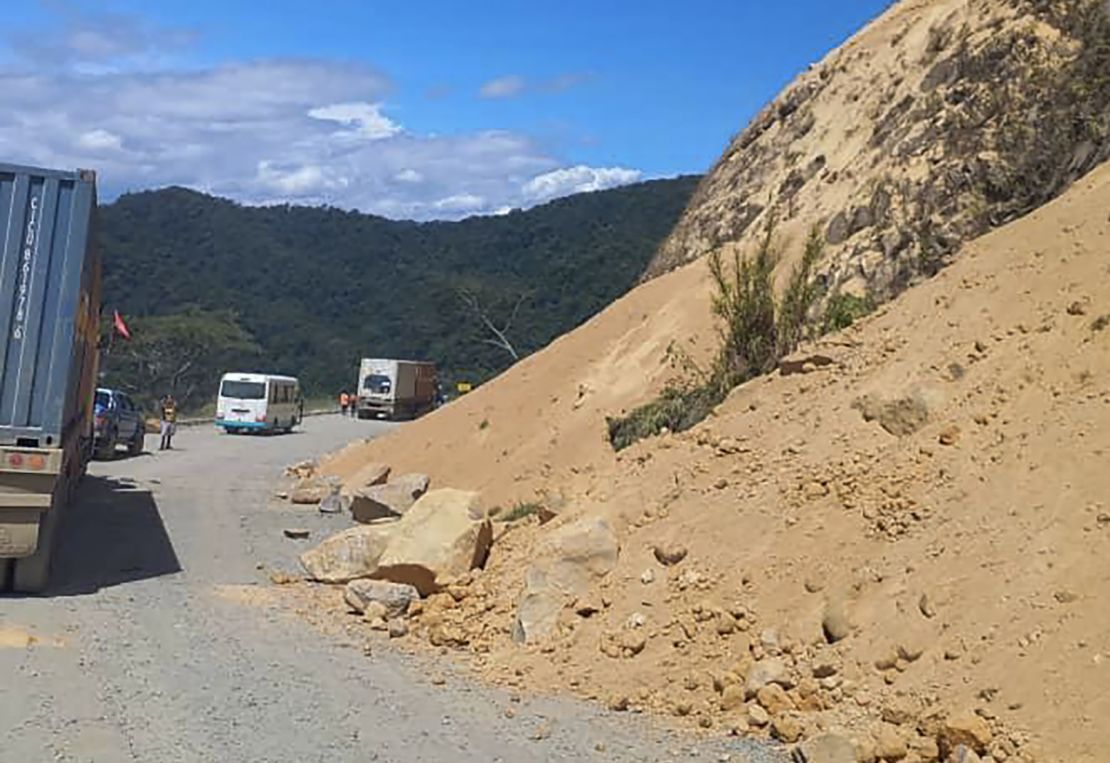Massive 7.6 earthquake rocks Papua New Guinea | CNN (original) (raw)

CNN —
A massive 7.6 earthquake struck Papua New Guinea on Sunday, causing landslides, cracking roads and damaging buildings.
While the extent of the damage remains unclear, photos showed debris strewn across highways and cracks opening up in roads.
The quake struck at a depth of 90 kilometers (roughly 56 miles) near Kainantu, a town with a population of roughly 8,500 people, the United States Geological Survey reported.

There have been no reports of deaths and no official confirmation of the damage caused, but residents took to social media to post pictures of cracked roads, damaged cars and items falling off supermarket shelves, Reuters reported.
The US National Tsunami Warning Center said there was no threat of tsunami waves. Earlier in the day it had said hazardous tsunami waves were possible within 1,000 kilometers (roughly 621 miles) along the coasts of Papua New Guinea and Indonesia.
An earthquake of a similar size that hit the country’s remote highlands in 2018 killed more than 60 people and wounded 500, destroying houses, causing landslides and damaging a major gas plant.
Papua New Guinea is vulnerable to earthquakes because it lies along the “Ring of Fire” in the Pacific Ocean, where shifting tectonic plates push against each other, causing tremors.
The “ring” stretches along a 25,000-mile (40,000-kilometer) arc from the boundary of the Pacific Plate, to smaller plates such as the Philippine Sea plate, to the Cocos and Nazca Plates that line the edge of the Pacific Ocean.
It is home to the world’s most active volcanoes.
People most at risk from volcanic eruptions and earthquakes live in countries that lie along the Ring of Fire, including Chile, Japan, the US west coast, and other island nations including the Solomon Islands to the western seaboard of North and South Americas.
CORRECTION: An earlier version of this story quoted the Australian Red Cross as saying at least 16 people had been killed. The Red Cross has confirmed that death toll is incorrect, and related to a statement concerning a previous earthquake in Papua New Guinea that was mistakenly circulated.